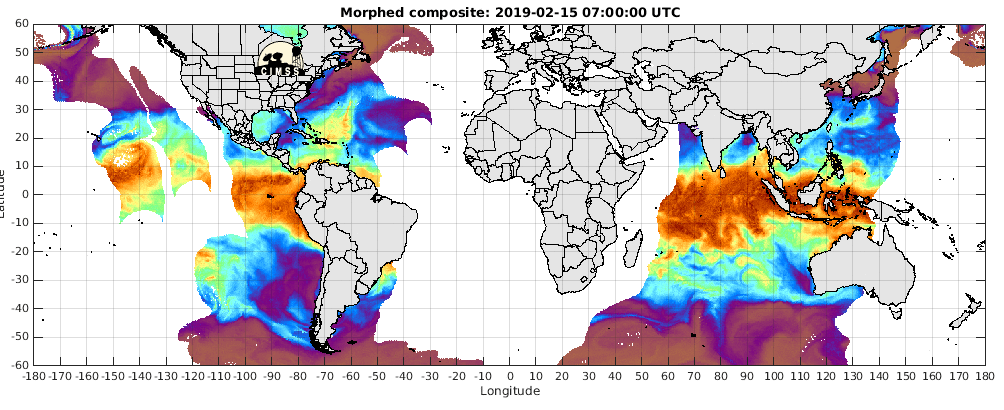For the second year in a row, an atmospheric river is inundating the Golden State, and the torrential rain it’s bringing will continue to bring devastating flooding. For anyone in—or adjacent to—the atmospheric river’s coming path, now is the time to prepare. For anyone in—or adjacent to—the atmospheric river’s coming path, now is the time to prepare. Here is an explanation of what an atmospheric river is, and how to prepare for flooding in its wake.
Understanding What An Atmospheric River Is
Atmospheric rivers are elongated regions in the Earth’s atmosphere that contain high amounts of moisture—in the form of water vapor—and behave like rivers in the sky. As they move with the weather, they carry with them an amount of water vapor equivalent to the average flow of water at the mouth of the Mississippi River. An especially strong atmospheric river can transport an amount of water vapor roughly equivalent to 7.5 to 15 times the average flow at the Mississippi’s mouth.

When an atmospheric river makes landfall, the water vapor it carries is released in the form of snow or rain. While most atmospheric rivers are weak systems that don’t cause damage and are instead crucial to the water supply, some—such as the one that ran from late December 2022 to mid-January of 2023—cause deluges and massive flooding.
8 Ways to Prepare for an Atmospheric River or Flood
One of the biggest impacts of an atmospheric river comes in the form of flooding. Yet there are many free and cheap ways anyone can prepare for an atmospheric river event, or a flood.
Get the Emergency Flood Alert
While the Wireless Emergency Alert System should notify anyone in the path of a flood, you can also sign up for additional emergency alert apps that will notify you of an emergency in your exact location. Knowing what each flood alert you receive is also important:
Flood Watch: Be prepared, a flood watch is issued when conditions look promising for flooding.
Flood Advisory: Be Aware. A flood advisory is issued when a specific weather event that is forecast may become a nuisance, but when the alert doesn’t merit a warning.
Flood Warning: Act! A flood will occur soon. Immediately move to higher ground.
Establish an Evacuation Route
Identify multiple evacuation routes from your home or place of business so that if one is blocked by water you have another exit. That’s critical because you should never enter a flooded roadway: 6 inches of moving water can knock a person and 1 foot of moving water can sweep a car away.
Seal Important Papers and Essentials in Plastic
In the event of a flood in your home you’ll need access to critical paper work, such as the deed to your home. To protect these items, seal important papers in plastic—ziploc bags will do—and place them up high.
Ideally you’ll also seal some emergency supplies in plastic bins if possible, including matches and a change of dry clothing for each family member.
For a zero-cost solution—one that doesn’t require purchasing plastic bags or plastic bins—place all important documents and memorabilia high on a shelf so that if a flood does occur, it won’t soak boxes stored at ground level.
Move Essentials Upstairs and Stay Out of the Basement
Walls can collapse in floods, trapping people under debris and rising water. Many of the 46 people lost their lives in New York, New Jersey, Pennsylvania, and Connecticut after Hurricane Ida arrived there were trapped in flooded basements.
Prepare to Go Higher Than the Flood
Know the highest point in your neighborhood and how you’ll get there. If you’re inside, prepare to get to, and shelter in, the highest level of your home or building. Only climb out on the roof if absolutely necessary, and once there signal for help. Do not climb into an enclosed attic without an exterior escape route.
Get Free Sandbags Before the Flooding Starts
Once a flood watch has been issued, visit your local fire station and request some sandbags to place around your home.
Charge Devices Before the Atmospheric River Arrives
Because severe weather and flooding can knock out electricity, sometimes for days, ensure all electronic devices used for emergency communication are charged in advance.
Prepare Your Pets to Evacuate
Include your pets in the emergency plan by making sure they are wearing collars and identifying tags with your contact information, and even making their own pet disaster kit. It’s also good to have leashes at the ready for larger pets, a carrier ready for smaller pets, and a week’s supply of food packed in case you need to evacuate.



